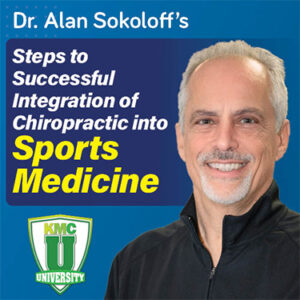Posted by Team KMCU on Jun 20, 2025
Is Cash Still King in a Cash-Only Practice?
Hot Topics from the KMC University HelpDesk
Many chiropractors proudly stand behind the phrase “Cash is King,” and for good reason. A cash-only model offers real advantages—reduced administrative work, freedom from insurance billing headaches, and greater control over operations. However, don’t let the simplicity fool you. This model doesn’t grant immunity from state or federal audits. Like a good perfume, simplified billing can mask serious compliance responsibilities—ones tied not to payers, but to your core obligations as a licensed healthcare provider.
Being state-licensed means your practice must meet specific legal and ethical standards regardless of how you get paid. That includes requirements like staying current with continuing education, adhering to your state’s scope of practice, and following professional conduct rules.
Documentation Still Matters
Every patient encounter—insurance, cash, or wellness—requires accurate documentation. Solid records don’t just justify your care; they also protect you against malpractice claims and licensing board complaints. Getting and documenting informed consent is a must, not an optional step.
In a cash-only practice, the state board often becomes the primary watchdog. Without insurance payers in the mix, patients who are unhappy with their care or record-keeping are more likely to file complaints. If your documentation is incomplete or missing, you’re left vulnerable when those complaints surface. Regardless of how you collect payment, poor documentation can quickly put your license at risk.
Cash-Only Doesn’t Mean Rule-Free
Even in cash-only settings, HIPAA rules still apply if your office handles electronic transactions such as eligibility checks, authorizations, or referrals. Being a “non-covered entity” doesn’t exempt you from safeguarding Protected Health Information (PHI). On top of that, some states impose even stricter privacy rules than HIPAA. Conducting a Security Risk Assessment and providing a clear Notice of Privacy Practices are essential steps to stay compliant.
Likewise, OSHA compliance is non-negotiable. Chiropractic offices must meet workplace safety standards, including protocols for bloodborne pathogens, radiation safety, hazardous chemicals, and general office safety. Even if you’ve never faced an inspection before, non-compliance can trigger surprise audits—and hefty fines.
Managing Medicare in a Cash-Only Practice
Treating Medicare patients while running a cash-only practice can get tricky fast. Chiropractors cannot simply label a covered service as “non-covered” to bypass Medicare and collect cash. If you perform medically necessary spinal manipulation, you must submit a claim to Medicare, even in a cash model.
As a chiropractor, you can enroll as a participating or non-participating provider, but you cannot opt out of Medicare altogether for covered services. Non-participating providers may charge patients directly—but only within the limits of the Medicare Limiting Fee, and only when the patient selects Option #2 on the Advance Beneficiary Notice (ABN). Attempting to skirt these rules by charging cash for covered care without billing Medicare could result in penalties, and even investigation by the Office of Inspector General (OIG). That’s not a risk worth taking.
Discounting Medicare-covered services to encourage cash payments is also illegal and may be viewed as fraudulent. The OIG takes improper billing seriously—so should you.
Running a cash-only practice doesn’t mean you’re off the hook for audits. While you might see fewer billing audits, other watchdogs are still keeping an eye on things, and their scrutiny may be worse! While cash may be king, the best audit defense is a compliant offense!
Click the button below to check out our free webinar that digs deeper into best practices for cash-based chiropractic practices:
Cash Flow Strategies for Today’s Cash-Based Chiropractic Practice
Dr. Erin Stubblefield graduated from Palmer College of Chiropractic in Davenport, IA in 2006. After practicing privately, she transitioned to education and taught Chiropractic education for 13 years before joining KMC University as a Specialist in 2024. Currently, Dr. Stubblefield is the owner of Sunflower Consulting, LLC, a healthcare consulting and practice coaching group. Dr. Stubblefield partners with KMC to provide accurate, current, and compliant information. For further information, you can reach her at drerin@kmcuniversity.com.







Comments on No Insurance, No Immunity: Chiropractic Audits and Your Cash-Only Practice